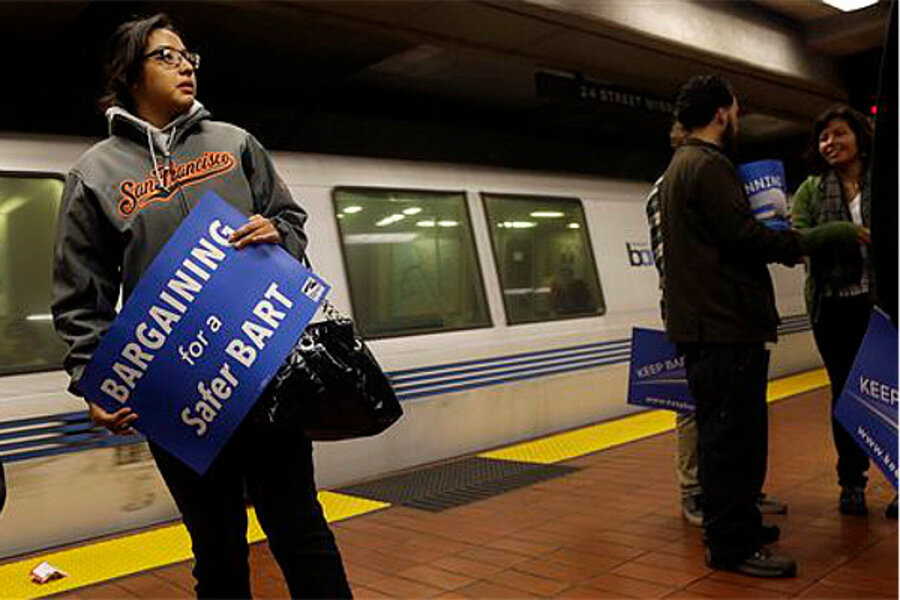BART strike: One union on board, more to go.
Loading...
| SAN FRANCISCO
San Francisco's Bay Area Rapid Transit System (BART) reached a tentative deal on Tuesday with one union, but most workers remained on strike in a dispute that has halted commuter trains for two days, a spokesman for the agency said.
The two sides resumed bargaining on Tuesday evening after the strike by about 2,400 employees triggered a second day of painful commutes for thousands in the Bay Area who were forced onto crowded roads, buses, and ferries with no train service.
Rick Rice, a BART spokesman, said he had no details about the agreement between BART and AFSCME Local 3993, which represents mostly middle managers. That union was not on strike but its members did not come to work to show support for coworkers who were on strike.
AFSCME confirmed in a written statement that a tentative deal had been reached and said it would "strongly advise" its some 200 members to return to work at the transportation system that serves 400,000 riders daily, he said.
The strike is the first by BART employees since 1997. The two sides have been far apart for months and talks with management faltered late on Sunday just hours before labor agreements expired.
BART has put forward a "fair and responsible" offer that included an 8 percent pay increase over four years that union negotiators rejected, according to its spokesman. Union representatives say management has not negotiated in good faith.
With BART trains out of action, local officials have added extra buses and ferries to shuttle commuters from cities on the east side of San Francisco Bay such as Oakland to San Francisco. The additional transport accommodates only a fraction of commuters who use BART trains. Routes to and from San Francisco and East Bay communities are among BART's busiest.
If they could, commuters worked from home. Many used car pools. But heavy traffic pointed to many others driving on their own and choking some highways, especially the Bay Bridge linking the East Bay and San Francisco.
Carol Bach of Oakland said she was surprised to board a San Francisco-bound bus on time after catching a bus on Monday on the same route that was well behind schedule due to traffic on the bridge.
But the ride into San Francisco on Tuesday turned out to be longer and the bus took on so many passengers several had to stand, said Bach, an environmental affairs manager at the Port of San Francisco.
"Traffic was much worse," she said. "It seemed like today more people were back to work."
Additional time commuters spend sitting in traffic will cost the San Francisco region's economy $73 million in lost worker productivity each day the strike persists, according to the Bay Area Economic Institute.







